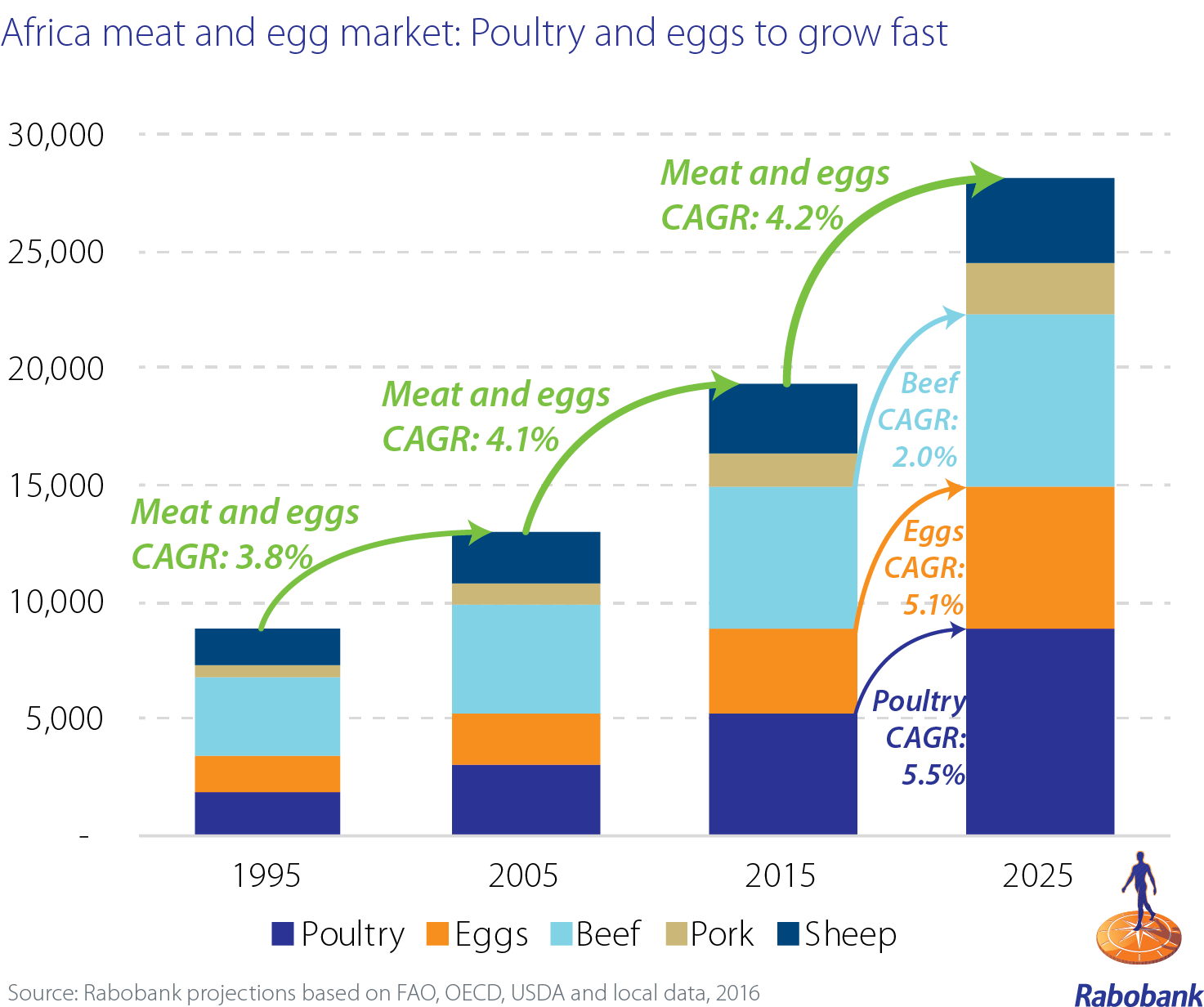Poultry refers to the global multi-billion-dollar industry that breeds and raises birds for meat and eggs.
While poultry generally includes chickens, ducks, turkeys, geese, and other birds, the industry is dominated by chicken production which represents more than 95% of output.
According to market analysis by the Dutch banking group, Rabobank, global demand for poultry products is expected to grow by more than 60% over the next 20 years, and Africa’s poultry industry is projected to expand considerably during this period—growing at a compound annual rate of 4.7%.
With a poultry market that is valued at $25 billion, the demand for poultry products in Africa could double within a decade, with markets like South Africa, Nigeria, Egypt, Algeria, Ethiopia, and Morocco leading the charge.
Africa presents a huge market demand gap that creates several interesting opportunities along the entire poultry value chain.
Although the continent has about 15% of the global population, it produces less than 5% of the world’s poultry products. Also, Africa’s per capita consumption of poultry meat and eggs is significantly below the world average, providing significant room for consumption and growth.
This guide explores the top 5 lucrative opportunities in Africa's poultry market. We will explore the key factors driving demand for poultry products on the continent, business ideas within the poultry value chain, and inspiring success stories of some poultry businesses in Africa.
But why is poultry the future of animal protein in Africa? Why not beef, pork, lamb, or any other meats?
Actually, compared to other major sources of animal protein in Africa—such as beef, pork, sheep, and goat—the graph below shows the demand for poultry products in Africa has taken off and outpaced other meat products in the last 25 years.
Also, poultry products are arguably more affordable and accessible to consumers in many parts of Africa.
And in a world that's trying to deal with the effects of climate change, poultry production happens to have one of the lowest environmental footprints in terms of water use per kilogram of meat or eggs produced, land use, and environmental stress—compared to cattle, pigs, and other livestock.










